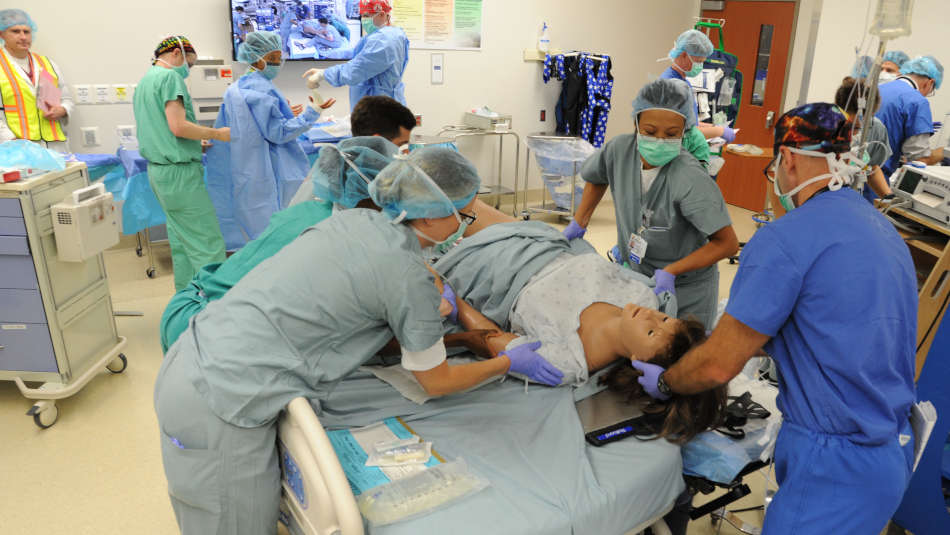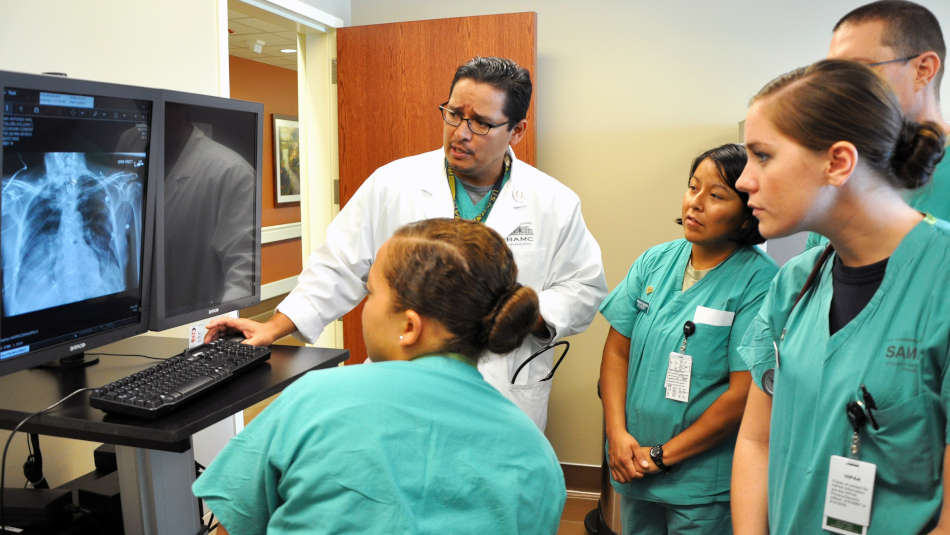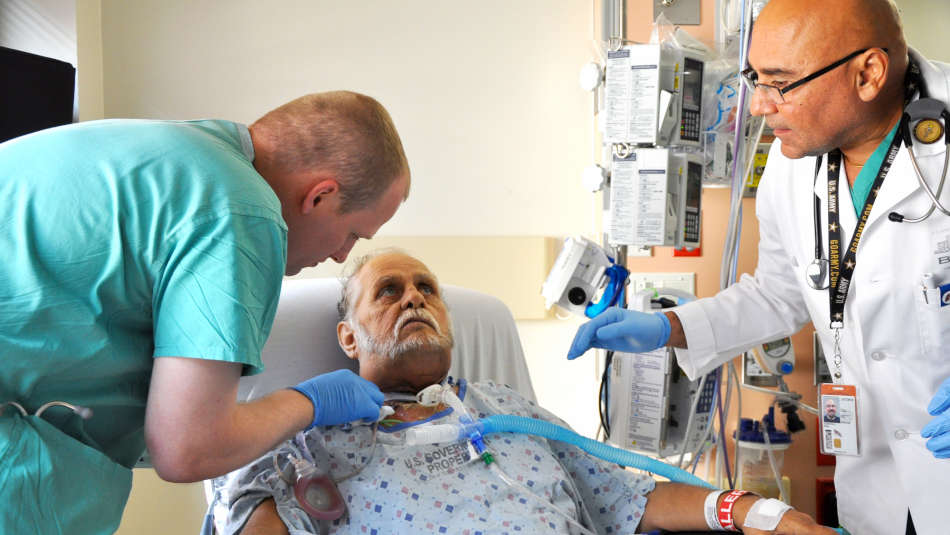Do you already know that you want to study nursing but aren’t quite sure about the profession? Should you become a registered nurse, neonatal nurse, or telephone triage nurse?
I fully understand you, it is a hard decision to make.
That’s why in this article I’m going to give you a full step-by-step guide on how to become a respiratory therapist.
After reading this article you have a much clearer vision of whether you would like to become a respiratory therapist or not.
Before I start about the steps and the path, I will introduce myself to you so that you know my perspective on nursing.
My name is Ida Koivisto and I’m a registered nurse and a public health nurse. I graduated from a high school in 2015 and after that went straight to complete a Bachelor’s Degree in Nursing.
Now I’m eligible to be working as a nurse – to be more exact – as a registered nurse or a public health nurse.
But wait, where was the part about the respiratory therapists?
To be honest, I haven’t worked as a respiratory therapist ever. However, I have used a spirometry test several times for my patients as well as worked a lot with RTs.
At this point, you should have enough information about me to decide whether you can trust the advice I’m going to give you.
Before I can give you the steps on how to become a respiratory therapist you should know the basics about them first.
THE BASIC INFORMATION ABOUT RESPIRATORY THERAPIST
Respiratory therapists commonly treat patients suffering from lung conditions like asthma and emphysema by administering oxygen through ventilation devices.
They may also help patients who’ve had a heart attack or stroke regain normal breathing function.
In addition to turning or lifting patients, standing for long periods might be required for respiratory therapists.
This is explained by that some respiratory therapists work in hospitals or nursing homes, while others travel to patients’ homes to install and maintain respiratory equipment for at-home use.
You should also know that respiratory therapists who work in medical facilities often work evenings and weekends.
You might be also interested in the respiratory therapist salary. In short, according to the U.S. Bureau of Labor Statistics, the mean hourly wage is $30.05 and the mean annual wage is $62,500 in the USA.
If you’d like to know more specific salary information check out this article of ours: Respiratory Therapist Salary.
That’s the basic information about respiratory therapists. Now it’s time to move on to the topic of how to become a respiratory therapist – right after this picture of RTs training.

What does it take to become a respiratory therapist then? Let’s start from the beginning.
First of all, I highly recommend that you gather as much as possible information about the profession before even thinking about applying to school or a program.
You’ll regret afterward if you have made the wrong choice.
If you have gathered enough information and are sure about the choice, you can take into account your future profession already in high school.
Recommended courses for future respiratory therapists at high school are health, math, biology, chemistry, and physics.
After high school, you have two viable options on your path on how to become a respiratory therapist. The first and a shorter one is to complete education via an Associate’s Degree in Respiratory Therapy.
Another option is via a Bachelor’s Degree in Respiratory Therapy.
Associate’s Degree in Respiratory Therapy is more common than a Bachelor’s Degree in Respiratory Therapy. It includes more practical training and rehearsal than a Bachelor’s Degree.
A Bachelor’s Degree in Respiratory Therapy, on the other hand, includes more management studies.
But which one of these two options you should take?
In short, if you rather spend more time with patients and like to get your hands dirty in practical work – choose an Associate’s Degree in Respiratory Therapy.
If management and organizing are more of your thing – choose a Bachelor’s Degree in Respiratory Therapy.
Okay, but how long does it take to become a respiratory therapist via an associate’s or a bachelor’s degree? That’s coming up next.
Table of Contents
How long does it take to become a respiratory therapist?
At this point, you should already know that you have two viable options becoming a respiratory therapist – via an Associate’s Degree or a Bachelor’s Degree. Let’s dig in more about an Associate’s Degree in Respiratory Therapist first.
An Associate’s Degree usually takes two years to complete. Some colleges provide you an option to complete your studies in less time via fast-track programs. Some fast-track programs can be completed in 15 months. That’s pretty fast!
A Bachelor of Science in Respiratory Therapy is a longer approach to starting a career as a respiratory therapist.
It usually takes three to seven years depending on how motivated you are, and whether you are studying full-time or part-time.
How many years to become a respiratory therapist?
Repetition is the mother of learning:
- An Associate’s Degree in Respiratory Therapy takes usually between 15 to 24 months to complete.
- A Bachelor of Science in Respiratory Therapy takes between three to seven years depending on your own motivation and situation in life.
We could also combine these two and say it takes 1.5 to 7 years to become a respiratory therapist.
How do you become a respiratory therapist online?
How to become a respiratory therapist online or is it even possible? Actually, yes it is!
Some universities and/or colleges provide options to complete your advanced respiratory therapy studies online. For example, if you would like, as a registered respiratory therapist to complete a Bachelor of Science in Respiratory Care.
According to BestColleges.com, here are the TOP 3 universities in the USA to complete your Bachelor’s Degree in Respiratory Care:
- The University of Mary, Respiratory Care studies online
- Oregon Tech, BSRT
- The University of Cincinnati, Respiratory Therapy studies online
You can learn more about the Best Online Bachelor’s Degrees in Respiratory Care in the USA at BestColleges.com.
How to become a respiratory therapist …

As you probably guessed, studies and requirements vary by the state you live in. That’s why I’m going to give you the answers based on the state.
Let’s start on how to become a respiratory therapist in Texas.
in Texas
Texas Medical Board has provided a full-depth application process overview to follow. I highly recommend that you check that out.
in California
California has its own dedicated Respiratory Care Board California. That’s the place where you can find all the details you need to know about respiratory care studies in California.
in another state than Texas and California?
American Association for Respiratory Care has gathered a full list of all the Respiratory Care contacts by state. From their website, you can find a link to the Respiratory Care Board that you need.
Steps to become a respiratory therapist
Last but not least, here are the steps on how to become a respiratory therapist.
- Gather enough information about respiratory therapists to be sure about your career choice. Here are a couple of really good sources to do that: Respiratory Therapist – All About RTs and Respiratory Therapist Salary.
- Prepare for respiratory therapy studies already in high school by attending courses about health, biology, math, chemistry, and physics.
- Choose between an Associate’s Degree in Respiratory Therapy and a Bachelor’s Degree in Respiratory Therapy, and apply to school of your choice.
- Study hard and stay focused at school and during the internships.
- Graduate, and celebrate your degree with classmates, friends, and family.
- Apply to be working as a respiratory therapist.
That’s all about how to become a respiratory therapist.
I hope you got all the answers you wanted to. If you need more information you can always contact us via a form.
You might be also interested in these articles of ours:
- Respiratory Therapist Salary
- Respiratory Therapist – All About Respiratory Therapists
- How To Become A Registered Nurse
- How To Become A Neonatal Nurse
- How to Become a Hospice Nurse
I’d appreciate it if you could also rate this article. Thank you in advance!
